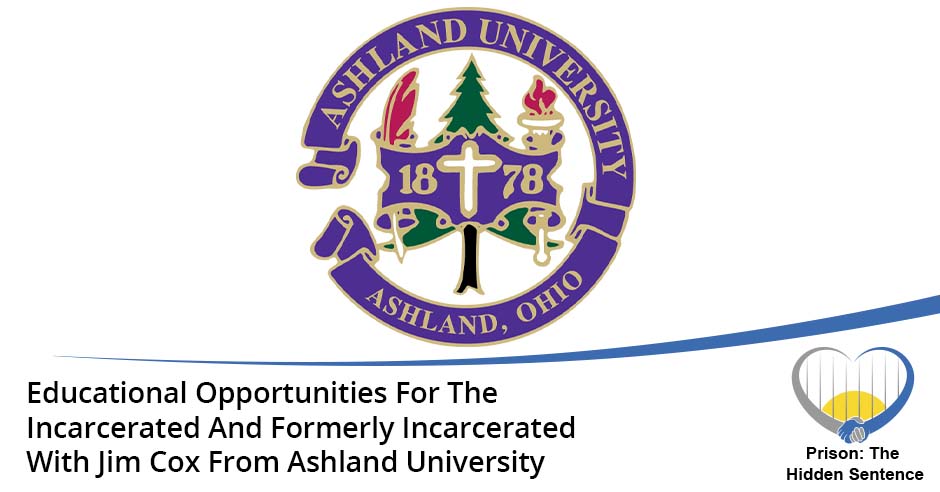
In this episode, Jim Cox from Ashland University joins us to share eye-opening insights into their transformative educational programs for incarcerated and formerly incarcerated individuals. Discover compelling stories of resilience and success, learn how education can reduce recidivism, and understand the powerful impact these programs have on individuals and society. This inspiring conversation reveals how education can be a catalyst for change and a beacon of hope for those re-entering our communities. Don’t miss this enlightening and motivational discussion on how education can transform lives and support successful reentry.
—
Listen to the episode here
Educational Opportunities For The Incarcerated And Formerly Incarcerated With Jim Cox From Ashland University
I’m here with Jim Cox. He’s the Assistant Vice President of Correctional Education at Ashland University in Ashland, Ohio. He’s married to his college sweetheart and the father of three successful men. Stay tuned and read about Jim’s story about how he became involved with supporting those involved in the prison system thus providing education to incarcerated and formerly incarcerated people.
‐‐‐
Welcome, Jim. Thank you so much for speaking with me.
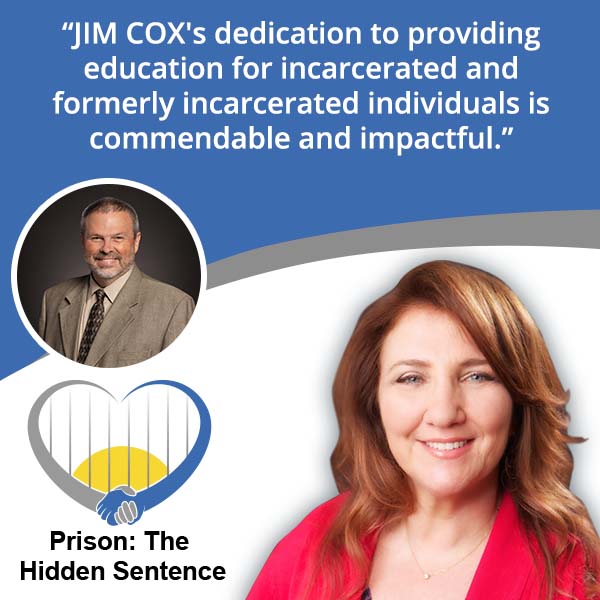
Thank you. It’s a pleasure. How are you?
I’m wonderful. Spending time with you is awesome. I’m so excited about our talk. I want to address the elephant in the room right off the bat. People always ask about people who have been incarcerated, “Does everyone deserve a second chance? What about the victims?” Let’s address that first. What are your thoughts?
Thank you for that opportunity. I am very glad to be here. It can be fairly said that there are a number of people who made some choices and did some things that got them upside down with the law. However, Ashland University and I think there are many folks who believe that individuals should have second, third, fourth, and fifth chances.
One of the key ways to do that and provide an opportunity or a chance to go down a good pathway is through education. It could be vocational education. It could be higher education. Here is why I believe, and there are others who do believe, that that’s important. It’s because most of the individuals who are incarcerated, most of these returning citizens, will become your neighbor, your community colleague, and my neighbor. Why would we not want to work closely with these men and women to provide opportunities for them for employment, for engaging in their community, for raising a family, or for doing things that we all value and find to be important to our area and our community?
Let's invest in our communities by investing in the education of returning citizens. Share on X
The Value Of Education In Prison
I’ve been asked, “What about those who are the most difficult offenders, the ones who have committed the most heinous crimes?” We could think about those. I was asked that, and my response is this. They may not or perhaps should not leave prison for a number of reasons, but they shouldn’t be barred from an education.
I’m well aware of lifers and others who provide mentoring and guidance to individuals, men and women, who come into prison. Providing that educational opportunity to those individuals who may not be leaving prison is not only an opportunity they should have but there’s humongous or huge value to those individuals as they work with other people who enter the prison system. I am a strong believer in multiple chances. We are all far from perfect. I want to welcome back with wide arms those who have served their time and want to do some wonderful things in their community.
We are all far from perfect. Let's welcome returning citizens with open arms and support their journey towards a better life. Share on X
We know a lot of people who have done wonderful things when they’ve come out and given back. I like the way that you talk about second chances, third chances, or fourth chances. However, I don’t want to say everybody doesn’t need to be released, but there could be circumstances where somebody should not be released but also continue learning, educating, and supporting others who are with them and who are incarcerated. What about the victims?
I don’t want to lessen the importance of what the victim is going through whatever the situation is. Many of us are not trying to solve all of the justice system challenges whatever they may be. The position that Ashland University is in, the position that I’m working in, is focusing on a key element of individuals who will be returning to society, whether it’s efforts to resolve or to deal with issues that led them into incarceration. That’s for a lot of other folks as well as us to talk about. I have a deep heart and understanding of what the victims are being challenged with and going through. I do not want to lessen that at all. We’re focused though on those who are incarcerated and formerly incarcerated and providing pathways for them to find a great way to involve themselves again with their communities.
Thank you for your heart, and thank you for sharing that. Prison: The Hidden Sentence, the Prison Families Alliance, and the Connecting 4 Justice Conference that we’ll talk about a little later, we’re all working with the prison family including the family on the outside and supporting them but also the person that is incarcerated or returning citizen that’s been released. We’ll talk more about that. Thank you for sharing that. I’m really interested in learning more about Ashland University’s Correctional Education Division and the programs from the university’s colleges. How did it get started? Where is it now?
Ashland University’s History Of Prison Education
There’s a long missional history that Ashland has been involved with. In the mid-’60s, Ashland University began teaching, which was then Ashland College, to incarcerated individuals. A fun little fact is the Ohio Reformatory, which is one of the places they began to teach, was the building that was the centerpiece in the Shawshank Redemption. That’s about fifteen miles south of Ashland University. It’s also where other movies were filmed. Sylvester Stallone was involved with that too. It has been closed since the ‘90s and is used for something different. Ashland began in the ‘60s and continued. In the mid-’90s, Pell funding went away for incarcerated individuals. This is the United States DOE funding that all students apply for their undergraduate work.
DOE is the Department of Education?
Correct.
I want to go back. You said in the ‘60s, Ashland College taught at the prison that was used in the Shawshank Redemption movie. That’s amazing. I wanted to point that out. Let’s go back to the Pell Grants in the ‘90s.
The Pell Grants were discontinued in the ‘90s for a number of reasons. The state of Ohio wonderfully continued funding that through the state that although colleges and universities could not confer degrees, they were credit-bearing courses. In 2015 and 2016, the Obama administration approved what’s called The Second Chance Pell. That moved forward into the Trump administration approving it. As of July 1st, 2023, the Pell restoration is in place. There’s a process that we’re all going through that’ll take a little bit longer to get us there.
What Ashland did in 2016 was profound. We decided to begin to develop or deliver our courses in an online or what’s known as a distance education format. It’s not online like going on the open internet. It’s very locked down and appropriate from a security standpoint. The reason why we did this is there are far more individuals incarcerated who are ready for and deserve an education than Ashland already vouched can do. A face-to-face approach alone would not get that there. In 2024, we are the largest provider of higher education to the incarcerated. We’re in 13 states in the District of Columbia, north of 120 sites. We probably have about 2,700 or so students begin with us each semester 3 times a year.
The other thing that I want to say is it’s not purely online. At each site, we have what’s called a site director. He or she is a liaison with the institution. They are a face that the incarcerated students know. We have a hybrid approach where the instructors are teaching online and communicating with the students through our learning management system. We have the ability for the site directors to interact, motivate, and do some great stuff with the students as well. We’ve gone from the 1960s and face-to-face, all the way to trying to reach as many people as we can in these 120-plus sites.
Ashland University’s Correctional Education Program
This is so cool. Thirteen states, I don’t know if you can recite them if you have them there. I’m curious about what types of courses are offered.
The thirteen states are Ohio, Louisiana, West Virginia, Missouri, Georgia, New Mexico, Arizona, Minnesota, North Dakota, the District of Columbia, and Florida. There are two more. Kentucky is one. I forgot the other one.
I wish it was Nevada.
That would be good.
We’ll work on it.
The relevance is when we look at the demographics, there are female prisons. There are male prisons. There are all gamuts of security levels from minimum to maximum. There are, particularly in West Virginia and Louisiana, some parishes or jails, but they’re all state prisons. There are no federal prisons that we’ve expanded to. That’s been growing and that’s what we’ve been doing since 2016 when the Second Chance Pell began.
This is so great because we talk to families. Their loved ones are incarcerated and they’re looking for education. I was talking to somebody here locally. Unfortunately, you’re not in Nevada. He is looking to go for his Master’s. He needs a couple of courses, but he is incarcerated. He can’t take those last couple of courses. What kind of degrees or courses are offered, and we’ll talk about outside, in the prisons in these states that you’ve mentioned?
We are a division. We are, if you will, specialists in the incarcerated world. We access the other colleges of the university, particularly the College of Business and Economics and the College of Arts and Sciences. The importance of that is whether you’re a student face-to-face, let’s say a high school student going to Ashland on campus or an incarcerated student in Arizona, you are getting the same intensity and rigor and the same learning outcome. The modality is different. Instead of face-to-face, it’s online. It is so that when you achieve an associate’s or a bachelor’s degree in arts or sciences, you have gone through the same expectations that a student on campus has.
In fact, here’s a fun story. We had our spring graduation not long ago. One of the valedictorians was an incarcerated gentleman out of Arizona. It was a delight to be able to send a congratulatory letter to his mother along with the program. It is not college light. It is not Incarcerated University. These are the exact same tests and expectations of the kids who are on campus. I’m very proud when someone achieves something. They’ve had to work hard, especially given some of the environments of the correctional facilities they have to work in.
That’s what I was trying to imagine. Somebody’s incarcerated and they’re taking these classes. You must have some kind of arrangement or an agreement with the facilities so that these students can take the time to study and do what they need to do.
In fact, we have arrangements at a state level. You can’t go up to prison down the road, knock on the door, talk to the warden, and say, “I’m going to do this.” You need to work at a state-by-state level. You’re correct. At each facility, and it’s different if it’s a minimum versus a medium versus a maximum, we work with each student.
They can study with a device. It could be a Lenovo device. It could be a Chromebook. They work sometimes at 3:00 in the morning. They work sometimes in the afternoon. They have protected time to work with us. They can study almost 7/365 if they choose to do that. Sometimes, their count, their work schedule, or chow hall has timing so they can arrange their study time that works for their schedule and what’s going on.
Funding For Incarcerated Students
You spoke about Pell Grant. Some of this is subsidized.
Like a student coming from high school, men and women who are interested in college who are incarcerated fill out the FAFSA. It’s the same form. The only difference, unfortunately, is that whereas kids in a high school can send it in electronically, our students who are incarcerated have to mail it. It takes more time to turn that around. We’re trying to deal with that in a couple of different ways.
They’re evaluated for the FAFSA that they submitted. It’s those Pell dollars that we utilize to deliver educational programming. We do have some outside donors that help. We all have a lifetime limit of FAFSA dollars. There are some folks incarcerated who have met that and they need a few more courses to graduate. We have donor-driven funds to help them subsidize that.
With Ashland, it’s important to say two things. It has been mission-driven since the 1960s. We’re the longest continuously providing this in operation. Secondly, it’s not only the continuously operating education that’s mission-driven, but it’s through its operations, through the Pell, and through what we’ve done internally with the support of the faculty and administration to deliver this so that financially, it makes sense.
The student who’s incarcerated does not pay anything unless they’re out of Pell or unless they want to go self-pay. We do have some individuals who choose to do that. It’s pretty cool that an individual otherwise who may not have something to engage in can take education and continue their education until they achieve the degree they want to then pursue a Master’s or other things that are not Pell funded, but there are those opportunities as well.
I know there are so many people reading that are so excited to know about this. We hear so much, “What is my loved one going to do while they’re incarcerated? How are they going to better themselves? How are they going to be a better person?” We say that re-entry starts on day one. To be able to have these programs, especially if they can be funded, is amazing. Thank you so much for sharing that. Let’s stay on this topic for another minute and talk about the returning citizens. You have students that have been incarcerated.
Correct. It’s formerly incarcerated individuals, but it’s also for diversionary, those who have a choice of imprisonment or education as an option. It covers a wide range of individuals. This is designed, and it’s relatively new out of the gate, for individuals who have never had college before, had college university work but wasn’t with Ashland University, or certainly somebody who had been with us while incarcerated wanting to complete their degree on the outside, if you will.
When somebody’s incarcerated, a full semester of sixteen weeks is probably a good way to spend a lot of time and engage the mind in what you’re doing. On the outside, there are a number of things, especially recently released, that these men and women are trying to attend to. Those could be reunification with families, jobs, homes, food, transportation, or whatever the parole probation is focusing them on.
We’re aware that they want to get their life going in a priority way. Our online courses for the formerly incarcerated, if you will, are eight weeks. If somebody needs to stop because they need to deal with life and then come back, that’s fine. We can work on that. If somebody wants to take more than two courses, that’s fine. One course is also fine. More importantly, we are aligning ourselves with not-for-profits, social service agencies, and faith-based agencies because we know that there’s trauma that individuals have faced perhaps before prison and likely during plus the stress of coming out.
There’s a whole host of other things that we find if we can develop a pathway with a support structure and create a better opportunity for an individual to be academically successful, that’s a useful thing. It’s not, “You go to college. You’ll be better.” It’s, “Let’s meet you where you’re at and help you take those steps to believe in yourself and to find a cool outcome for you.” That will lead to an employment opportunity that’s life-sustaining wages. Part of our work as well is career counseling. It’s really exciting. There’s so much more work to be done, but this new expansion and doing a full continuum working with diversionary and current and formerly incarcerated is exciting work. I’m excited for these men and women who are engaging in it.
The Importance Of Support Systems For Returning Citizens
I love it. I love hearing it. Since it’s online, what if somebody is in Oregon or Nevada? Can they sign up for it since it’s online?
They can. Don’t misunderstand. If somebody wants to come on campus and do face-to-face courses, we welcome you. It’s tremendous. This is designed for anybody in the United States, not just the states we’d work with currently incarcerated. The nice thing is it’s what we call asynchronous, which means it’s not live-streamed. They can work on it at 3:00 in the morning. They come home from work or their second shift and they can pick it up when they get home. It is online. It’s the same level of rigor and academic expectation as anything else.
I know that for me personally and the organizations that I’m involved with, Prison: The Hidden Sentence, Prison Families Alliance, and the conference that we’re going to talk about in a minute, I’m going to be sharing this information because we have so many families that ask us as well as returning citizens. This is something that families can start planning while their loved one is incarcerated.
If they’re in one of the states where it’s offered and they’re taking the courses, they can continue when they’re released. If they’re not one of those states, then they’ve got another avenue to go to. There are several opportunities once you’re out. This is another opportunity and it’s geared towards people who understand. I know we have programs here at the local university too. There are programs for returning citizens at several universities across the United States.
This is another opportunity. I’m so excited to hear this because the more we can share with the families, the more they can share with their loved ones, and the better and healthier everybody is. We know when somebody’s incarcerated, if they’re taking classes, they’re going to have a better attitude. It’s going to make things easier for everybody that’s involved. Thank you for that. Is there anything else about Ashland University that you want to address before we talk about the conference?
When we get to the end here, I want to go back to pathways. Let me say this. Universities have a clear pathway established with high school students who are coming to the university for all the right reasons. What we in higher education, and I’m speaking very broadly, not just Ashland here, need to do is to create pathways for current and formerly incarcerated people. They are multiple. there’s not one way to do it.
We need to make sure that we meet people where they’re at, help provide those open doors, and take steps while they are rebuilding their lives. It’s not a quick decision and you’re gone. It can take a while. We recognize that. That’s the challenge that any university needs to be aware of when working with men and women who want to re-engage. It’s going to take some time. We recognize that and celebrate it. Let’s walk that journey together.
We must meet people where they are and help provide open doors to rebuild their lives. Education is a powerful tool for transformation. Share on X
The Connecting For Justice Conference
It’s so important. For anybody who’s out there who’s reading that’s associated with a university or college and has questions, we’ll be providing the contact information at the end here. Let’s talk about the conference, the Connecting 4 Justice Conference. That’s where we met. To be transparent here, I am on the board of the Connecting 4 Justice Conference. We are so excited that Ashland University is going to be a part of it this 2024 and playing such a big part. I always like to start at the beginning. How did you get involved? How did you hear about the conference? Tell us more about your participation in it.
Like you, I’m on cloud nine. This is so exciting. What an amazing group of people. I was introduced to Connecting 4 Justice through Catherine and Ron Tijerina of The RIDGE Project in Ohio. They do phenomenal work with men and women in prison but also a number of folks outside. They are working with youth and all sorts of things. Catherine introduced me to Kayla Victor and that’s how we began working.
There was no guarantee that things were going to click the way we wanted to, but I’ve found not only the passion but the intellect, experience, and capability of folks from The RIDGE Project and Connecting 4 Justice link well with Ashland’s mission and approach. That’s how it began. We started connecting our thoughts.
I know that Connecting 4 Justice has had wonderfully a focus on the family, family reunification, and what happens when individuals are gone and when they come back. It has expanded to an even broader catchment. The artwork for the conference is a quilt. Why? It’s because it’s a patchwork quilt. There’s not a single answer. There are many ways that people can come together. At the center, when somebody looks at the artwork, there are two larger pieces. One says family and the other says education. Both are rocks. Both are important.
The agencies and groups that individuals who have gone through the carceral system have to go through are rough, but we’re all driving toward that community and that family through education. That’s really what we’re focusing on. We’re setting up keynote speakers, workshops, and events that bring in aspects from the family and their concerns. We’re setting up legislators, social service, individuals, sheriffs, re-entry court justices, and not-for-profit individuals, people who specialize with their agency in the re-entry.
It’s important to note that, and many of the readers will probably recognize this, an experience in a state prison could be very different than a federal prison, a jail, and community restriction. It’s not one-size-fits-all. It’s a collaboration to find out how we can improve and celebrate the successes we collectively made in re-entry, but what are the many opportunities we have yet to tackle? We’re delighted to have people come to Ashland, Ohio this September 18th, 19th, and 20th, 2024.
I got goosebumps when you were talking. I’m so excited. It’s really coming together with The RIDGE Project, Ashland University, and Connecting 4 Justice. This is the sixteenth year of the conference. It’s on September eighteenth, nineteenth, and twentieth in 2024. There are some special activities on the twentieth. I don’t know if it’s been announced.
You can announce it. Go ahead. It’s all good. Go ahead and make a grand announcement.
We’re going to get an opportunity to tour the prison where the Shawshank Redemption was filmed. We’re going to have a special tour. Did you want to add to that?
It’s the 30th anniversary already of the movie, so there might be some other things. The chairman of that board, Dr. Maura Grady, is one of our wonderful professors here at Ashland University and is very much involved as an instructor in our division. We’re excited to have that connection in the Shawshank Redemption area. That’s pretty exciting to have people do that tour.
We were looking at places to have the conference in 2024 and we landed on Ashland University. That’s in the Mansfield area. Is that right?
The reformatory is in Mansfield, Ohio, which is about 15 or 17 miles south of Ashland. It’s a skip away.
There are lots of hotels in that area. You said it well, so we’ll leave it with that with the speakers. If you want more information, we will also provide that. Are you going to be speaking at the conference?
We’ll see if Kayla and my right hand, Vanessa, say that’s okay or not. We’ll see if there’s a message there. Besides the folks I mentioned, one of our key clinical psychologists that we work with will be talking about some of that reunification with family. We have faculty speaking. Ashland, on June 1st, 2024, will recognize a new president, John Peede. His story, which is worth talking about at some point in the future, is that he’s a strong supporter of correctional education. I suspect he’ll have some words that will be important to us as well. I don’t know. We’ll see if we’re herding for speakers and they want Jim to speak.
I don’t think we’re going to be herding. We’ve got lots of great speakers coming. Prison: The Hidden Sentence will be there broadcasting. Family members from the Prison Families Alliance will be there. For information on the conference, you can go to the website. It was formerly The International Prisoners Family Conference. It was renamed in 2024 to Connecting 4 Justice because of the growth and the opportunities being offered. The website is PrisonersFamilyConference.org.
That’s September 18th through 20th, 2024 in Ashland, Ohio. It’s open to people involved, people affected by, and people interested in what we’re doing with our criminal justice system. Jim said it very succinctly. If people want to reach out to you or learn more about Ashland University, how do they do that?
Thanks. If somebody wants to apply, it’s Ashland.edu. That’ll take you to our main website. You’ll see Apply Now. You’ll be asked to work on your FAFSA for the financial aid but also go through some quick review of your admission. Once you’re admitted, there’s a short survey. The relevance of that is whether you’re formerly incarcerated, a veteran, or have various substance abuse, concerns, or things that you want to address.
There are several special services focused on those populations of demographics. You are immediately connected with academic advisors and other advisors who help with things. That’s for the individual who wants to apply to Ashland. To get a hold of myself, it’s JCox1@Ashland.edu. I would welcome questions and be happy to put you in touch with folks. I appreciate the opportunity to share the information. You can call the university too, the good old-fashioned way. We’ll be happy to talk to you that way too.
I went to your site and I love it. It comes up with, “We See You.” It’s got lots of pictures in the back with a lot of diversity. It is very inviting. I’m so excited to learn about this too because I didn’t know. As we continue this work, we find that there are more good people, good services out there, and great opportunities that people don’t know about.
A lot of times, people find us through Googling on the internet and they’re like, “We didn’t know you were here. I wish I found you sooner. I wish I had known about this university sooner. I wish I had known about the support programs earlier. I wish I knew about the conference.” When this is released, you’re still going to have time to sign up for the conference. That’s important. Go to PrisonersFamilyConference.org. For information on support groups, that’s Connect@PrisonFamiliesAlliance.org. It’s so easy to find Ashland. That’s Ashland.edu.
You bring up a really important point in what you’ve said, which is beautiful. Whether it’s the conference or Ashland, these services and these outreaches are not only for folks who are recently out of prison but people who also may be out of prison for 5, 10, or 15 years but have been impacted and are formerly incarcerated. We want to meet people where they’re at and what’s relevant to them at that point. Whether you’re recently on the other side of the wall or you’ve been out building your life for many years, education, whether it’s through Ashland or this conference, is for everybody or those allies who work with these men and women who are coming back.

Breaking Down Barriers And Building Community
That’s a really good point because when somebody has been incarcerated and institutionalized, it could take several years for them to feel comfortable back in society and do this. You made a great point that you could have been released several years ago or your loved one or family member could have been. To meet you where you’re at, I love that.
This has been a great conversation. I hope that people who are reading found some helpful information here. If they’re looking for classes for themselves or their loved ones, I hope they found a great resource that will meet their needs as well as the information about the conference. That’s how we connected and how we keep connecting. We’re connecting for justice to keep things going and to support people. Any last words before we wrap up?
I want to thank you, Connecting 4 Justice, The RIDGE Project, and all of the agencies that are doing good work for these folks. We as people in the nation need to support one another and break down divisions and walls. The most important thing is creating pathways to higher education, to expanded thinking, and to good employment situations where there are life-sustaining wages and careers to be followed. It’s not because somebody had a left turn that it means the rest of their life is truncated or defined by that. We’re excited to connect with people in any way we can. I appreciate the opportunity to speak with you.
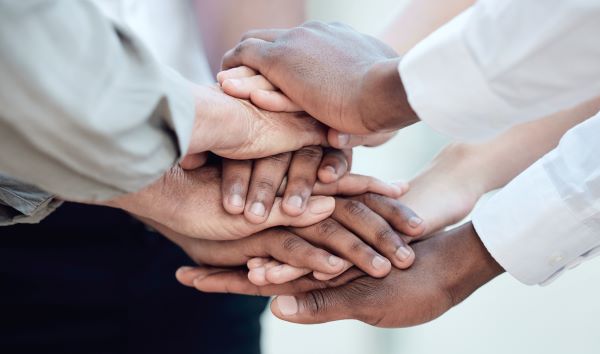
Just because somebody had a left turn doesn't mean that the rest of their life is truncated or defined by that. Share on X
It was a pleasure speaking with you. We’ll get this posted. Have a great day. Thank you, everybody, for tuning in.
Important Links:
- Ashland University
- JCox1@Ashland.edu
- https://PrisonFamiliesAlliance.org
- PrisonersFamilyConference.org
- Connect@PrisonFamiliesAlliance.org
About James H. Cox
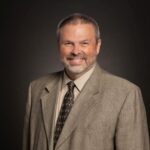 James H. Cox, CPA, MPA, is the Assistant Vice President of Correctional Education at Ashland University. With over 36 years of professional experience, Jim has worked extensively in senior management roles in higher education, healthcare, and consulting. Since 2010 his work has focused on higher education to justice involved persons. Jim’s work as an adjunct instructor and site director within Ashland University’s Correctional Education division provided a profound opportunity to work closely with justice impacted men and women, learn their stories and discover a passion to build a far better restorative pathway to community. Through Ashland University’s expansive reach to Currently Incarcerated Persons and its new initiatives toward Formerly Incarcerated Persons, Jim intends to work collaboratively to see these pathways realized as much as possible.
James H. Cox, CPA, MPA, is the Assistant Vice President of Correctional Education at Ashland University. With over 36 years of professional experience, Jim has worked extensively in senior management roles in higher education, healthcare, and consulting. Since 2010 his work has focused on higher education to justice involved persons. Jim’s work as an adjunct instructor and site director within Ashland University’s Correctional Education division provided a profound opportunity to work closely with justice impacted men and women, learn their stories and discover a passion to build a far better restorative pathway to community. Through Ashland University’s expansive reach to Currently Incarcerated Persons and its new initiatives toward Formerly Incarcerated Persons, Jim intends to work collaboratively to see these pathways realized as much as possible.
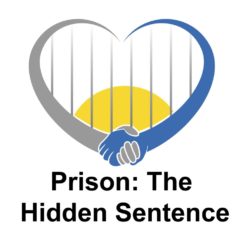
Leave a Reply